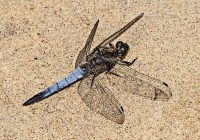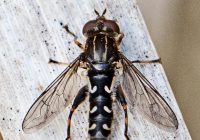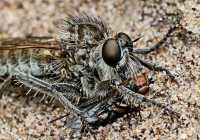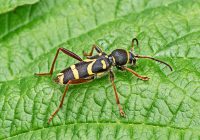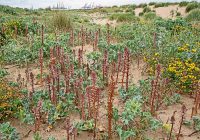Dr Phil Smith’s Wildlife Notes
June 2021
Following one of the wettest Mays on record, June turned out to be one of the driest, with sparse rainfall on only four days. Fortunately, the damp weather in May and a legacy of the wet winter meant that the impact of the drought on duneland plants was less than it might have been. Nevertheless, the vegetation of road verges and other dry habitats was soon burnt to a crisp.
Unsurprisingly, the Devil’s Hole water-table fell by 18 cm (7 inches) during the month but there was still deep water in the slacks, attracting many dragonflies, including the huge blue male Emperors and their green spouses. Also noticeable were Black-tailed Skimmers basking on bare sand, and the ubiquitous Four-spotted Chasers. Great numbers of teneral (immature) Common Darters were evidence of successful breeding but bad news for our Natterjack tadpoles which are susceptible to aquatic predators, such as dragonfly larvae. Usually, the Devil’s Hole slacks dry up in summer, preventing the build up of predatory invertebrates, but this did not happen in 2020.
Returning from the Devil’s Hole on 1st, my attention was drawn to an insect buzzing around a pine tree several metres up. I could hardly believe my eyes when I focused my binoculars on a Pine Callicera, a hoverfly which, until recently, could only be seen in the Caledonian pinewoods of the Scottish Highlands. Since 2011, it has been found in a few pine plantations in the Midlands and South Wales. Pete Kinsella had two in May last year, also at Ravenmeols, and one earlier this year at Ainsdale National Nature Reserve. It looks as though this formerly iconic Highland speciality is becoming established here though, being the same colour as pine bark, it may always be hard to find high in the trees. Yet another bonus that day was my last Spring Heath Robberfly of the year. Between us, Pete Kinsella and I have recorded 80 individuals of this Sefton Coast speciality.
The following day, a massive hatch of Banded Demoiselles on Downholland Brook at Alt Bridge provided another highlight. I counted a record number of 38 males and 10 females. On 5th and 6th I headed to Haskayne Cutting Nature Reserve for the annual orchid count. A total of 2281 Southern and Northern Marsh-orchids was down on last year’s 2600. Early Marsh-orchids declined even more; there were only a dozen where I had counted 109 in 2020. This may be due to natural vegetation change or to spring droughts which are becoming increasingly frequent. The swampy ditches at Haskayne support a surprising variety of insects and I was delighted to find two uncommon wetland hoverflies, a Waisted Duckfly and six Mini Tigers, while several delicate Black Snipeflies added to the interest.
On 8th Trevor Davenport joined me at Ainsdale Sandhills Local Nature Reserve. A male Stonechat greeted us just inside the entrance, where we soon reached a total of 45 Bee Orchids. The expected White Satin moths were absent, perhaps due to their Creeping Willow food-plant being flooded. Here, as elsewhere on the dunes, we found several Fan-bristled Robberflies basking on sandy paths. It seems to have been a good year for this fierce little predator. Another visit later in the month produced two splendid Dark Green Fritillaries nectaring on thistles. An unexpected find was a group of Wall Lettuce; I had not seen this shade-loving plant in the open dunes before.
About 20 members of the Wildflower Society joined me on 17th for a tour of the Green Beaches north of Ainsdale-on-Sea. The group was impressed by over 200 plant species in an area that was bare sand only 13 years ago. It included a fantastic display of marsh-orchids, mainly the brick-red coastal form of the Early Marsh-orchid. They also purchased several copies of my book Wildflowers of the Sefton Coast, which had just been published.
A sheltered woodland glade at Hightown produced some excellent insects but none more colourful than my first ever Wasp Beetle, a southern species with few records for the Northwest. Also here was a mating pair of Ferruginous Bee-grabbers, a Two-banded Wasp Hoverfly, supposedly common and widespread but not in my experience, a Marsh Snipeflyand two hoverflies that mimic bumblebees: the Bumblebee Plumehorn and Bumblebee Cheilosia. Three fresh Ringlets reflected their recent colonisation of Hightown dunes.
I always try to visit Crosby Coastal Park in June to see the strange purple spikes of Common Broomrape parasitic on Sea Holly. Thousands of them on the dune ridge south of Crosby Baths were an incredible sight. Nearby, I marvelled at the largest colony in Britain and therefore in the World of Isle of Man Cabbage,while a small population of Dune Wormwood continues to thrive at one of only two British localities. All this and breeding Skylarks too!

